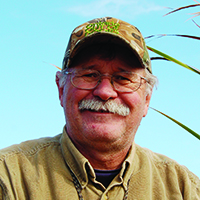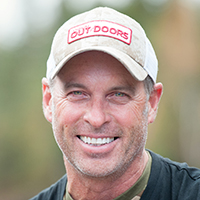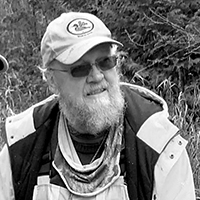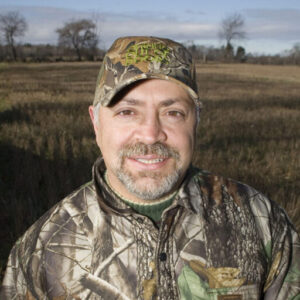A cacophony came downwind across the water as geese and mallards fed heavily on zebra mussels before flying out to fields of newly harvested corn. We watched a leeward point on a distant island as daylight dawned. When about half of the flock seen at first light remained, we darted across 200 yards of open water to the point, scattering birds in long lines. I pitched six goose decoys and an equal number of duck decoys in the sheltered lee-side water and took to cover on the edge of the cedars. Within moments, the first squadron of mallards began to return, followed by the resonant calls of approaching goose flocks. Once the easy hunting action diminished, we set up the remaining decoys, put the cover on the blind and pecked our way to a satisfying limit of fat, late fall birds, on their return from the cornfields. Decoy opportunities The duck and goose trap is a way of thinking about maximizing shooting opportunities by bringing geese and ducks into range over water. The trap encourages innovation and experimentation, tempered with biology. In a typical hunting situation, hunters arrive before first light, disturbing local birds that leave in darkness, and may not return to the hunters. I often wait until 9 a.m. or later, when most of the birds have departed for the fields, to choose where I will set up. I usually opt for a goose-roosting site that has not been disturbed by early morning hunters. These safe havens are remembered and used by mallards and geese upon their return from the fields. Over the years, the trap has changed the way I think about hunting ducks and geese, making my choices more adaptive to the availability of birds and weather conditions. I used to set up just for ducks or geese, but now my focus is usually on both. Pick your decoy While a field hunter will set up goose decoys as family groups, the overwater shooter is limited by the number of large, unwieldy decoys one can fit into a boat. On most overwater hunts, I take out between three and 12 oversized Big Foot Goose floater decoys, and as many as 24 mallards, and a few diver duck decoys depending upon what species are around. Decoy capacity limitations and the abundance of birds figure into my choice. If I find a good late-season mallard shoot, I will
Please log into your OFAH Community account to access this content. Not an OFAH member or Ontario OUT of DOORS Subscriber? Follow the links below to join or subscribe and gain access to exclusive online content.






Contact Information
PO Box 2800 / 4601 Guthrie Dr.
Peterborough, Ontario Canada K9J 8L5
Phone: 705-748-OFAH (6324)
Fax: 705-748-9577
Join Our Newsletter
Watch
Shop
Follow